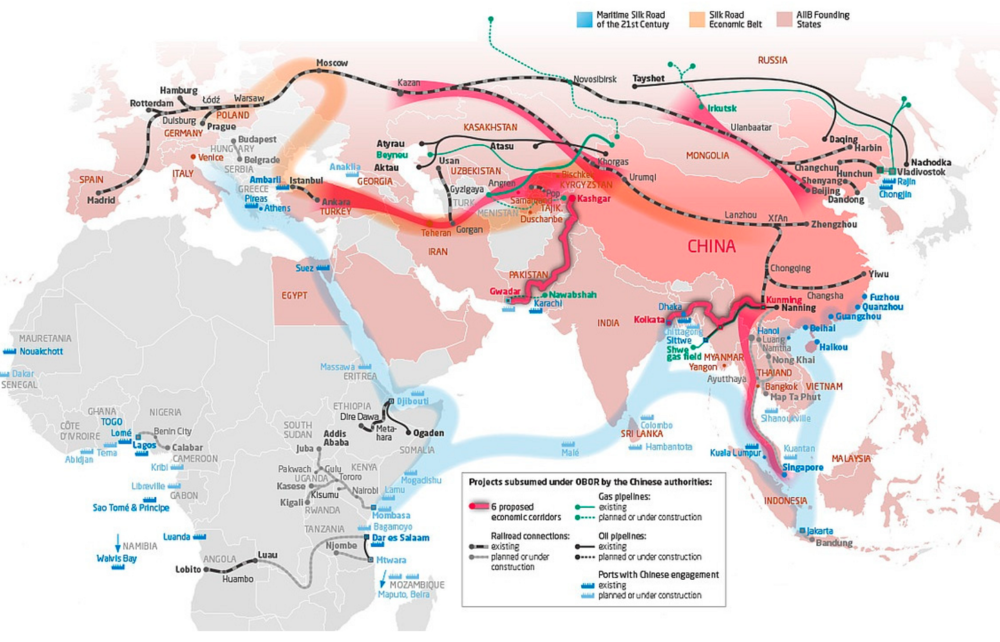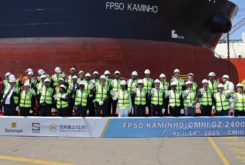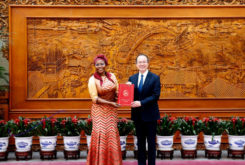*Dennis Zuev
Why study infrastructure visually?
The Belt and Road Initiative (BRI) has become the largest infrastructure program in history, and has become a symbol of growing significance of China and its power. At the same time very few scholars focused on the ways how the goals, mission and progress of the BRI are communicated visually. Despite the “enchantment of infrastructure” (Penny&Knox, 2012) few scholars studied BRI as a representational discourse or approached the study of its visual dimension. The vocal calls to study the “infra” in infrastructure – that is the materiality of the built environment along with its becoming, consumption and entanglement with politics, historical contexts and globalisation (Schweitzer et al. 2017) however have not suggested how exactly we can deconstruct the infra (politics or practices) of the infrastructure.
Scholars in international studies in their turn have also emphasized, that complexity of international studies can no longer be grasped by using approaches that rely only on word exchanges (Pfonner and James, 2020). At the same time, there are significant methodological challenges in understanding the rapidly changing visual global politics (Bleiker, 2015) and evolving spatial imaginaries, such as that of the BRI. “Reading” or translating the politics, or indeed “technopolitics” of infrastructure (Larkin, 2013) is not an easy task, as larger logics and infra politics behind visible materiality of the technological objects should be uncovered. These entanglements of materiality and “technopolitics” are directly linked to human affect, fantasy and desire. The important part of the infrastructural political address is the representation of the possibility to become and be modern.
Analysis of the existing visual material (photos, drawings and documentary films as well as promotional material) can help a more nuanced understanding of big political projects and their (symbolic) constituents and can further be used in the study of politics of infrastructure, its materiality and infrastucture-induced changes in lifestyles (Zuev and Habeck, 2019).
Belt and Road Initiative as a Visual Phenomenon
China defines its external politics and “going out” via BRI. As an imaginary it is constituted of significations and desires (Castoriadis, 1975) that make up an ideational (policy) superstructure of the BRI, whereas its material realizations of the infrastructure remain on the visible surface as rational, functional production of these ideas/policies. Massive infrastructural projects may be used to represent state power to the citizens (Harvey, 2012) or project that representation of state power to the citizens of other nations. And BRI is an important element of the Chinese global imaginary, where different ideas related to global connectivity and prosperity, “inclusive globalization” (Liu and Dunford, 2016), Chinese leadership and modernity, “global entrepreneurship”, and a missionary role of Chinese capital and knowledge in civilizing and modernizing (the backward) rurality are articulated. BRI no doubt is a unique project of planetary scale aiming to fulfil certain social promises related to technological modernity and sociotechnical imaginary, where China takes on a role of the global technological demiurge in facilitating modernization and creating the new, desired technoscape, shaping the appearance of the “built environment” and indeed at a higher point – changing relationships between humans and nature.
Exploratory analysis of visual representations of the BRI brings more light on the politics of the spatial imaginary of the Belt and Road Initiative. Approaching BRI as a political “brand” we need to delve into ambivalence and relationality of images (Zuev and Bratchford, 2020) that construct it. This exploratory study used the visuals found within the printed media (The Economist magazine) and visual imagery within the multimodal media (documentary films in YouTube). By looking at selected images (illustrations) in the Economist magazine we can discover, that depiction of the New Silk Road or BRI is far from being unilaterally negative or positive. The Economist is an elite media platform offering insightful information on developments across the world with its peculiar biases regarding non-Western nations.
The key images in this analysis represent “’plots”, that are useful launching points for exploratory deconstruction of the key tensions and (Western) anxieties behind the BRI. While the images can be ambivalent, they offer an insightful and fresh perspective on what kind of narratives cause key suspicion and should be countered by the authorities in their further “re-branding” or promotion of the BRI. The plots mentioned below are thick descriptions of the illustrations and the following is an example of one of these plots.
One of the plots identified can be entitled as “China gets rich”, where BRI is depicted as a rejuvenated silk road with the flow of goods and money to China, suggesting suspicion or anxiety about one-way enrichment for China. This is an incisive depiction of the Chinese “threat by infrastructure” and implications of impoverishment of the local population. At the same time, small heaps of coins represent the local treasures (resources), that are being carried away by boats and trucks. The camels depicted are iconic animals of the Silk Road, an idealization that helps to sell BRI and promote it as a rejuvenated trade route. At the same time, the roads are depicted as fragments, with projected ones connecting these bits. This sort of “projectification” is one of the positive connotations of the drawing. The map representing geographical terrain is the ground of turbulent trade and construction that is implied by the infrastructure built-up.
Other plots identified are: BRI as Planetary Infrastructure, Perpendicular mutuality/ Complexity of transactions, Prosperity for all brought by China and BRI as Digital Control Room.
While images produced by diverse artists can be ambivalent and interpreted in multiple ways, they manifest a variety of connotations regarding the BRI from visions of dystopian space of exploitation and surveillance to the visions of prosperity and planetary infrastructure, with hybrid nature of conflicting but connecting partnerships, led by China and thus implying awkward ways of coping. The images may be alluding to different problems or content of the initiative and thus it can be instrumental in decoding them as texts. The sets of symbols incorporated in them can be very simple but capable to symbolize visions and counter-visions of a particular project or an issue at hand. BRI is not merely a political platform or an ambition, but is an important cultural product and signifier of the modern Chinese culture – the symbol of going beyond the borders and effort of active exchange with the West. It also symbolically combats the cultural trauma of being dependent on the Western technologies, reverting the role of China from being the object of globalization to China being the key demiurgical force of “inclusive globalization”.




